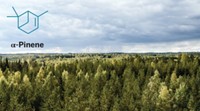Advertisement
Grab your lab coat. Let's get started
Welcome!
Welcome!
Create an account below to get 6 C&EN articles per month, receive newsletters and more - all free.
It seems this is your first time logging in online. Please enter the following information to continue.
As an ACS member you automatically get access to this site. All we need is few more details to create your reading experience.
Not you? Sign in with a different account.
Not you? Sign in with a different account.
ERROR 1
ERROR 1
ERROR 2
ERROR 2
ERROR 2
ERROR 2
ERROR 2
Password and Confirm password must match.
If you have an ACS member number, please enter it here so we can link this account to your membership. (optional)
ERROR 2
ACS values your privacy. By submitting your information, you are gaining access to C&EN and subscribing to our weekly newsletter. We use the information you provide to make your reading experience better, and we will never sell your data to third party members.
Environment
Model Maps Isocyanic Acid Distribution
Study suggests where to find high concentrations of the coal- and biomass-derived toxic substance HNCO
by Jyllian Kemsley
May 7, 2012
| A version of this story appeared in
Volume 90, Issue 19
A modeling study of atmospheric isocyanic acid (HN=C=O) suggests that it may reach harmful concentrations in China, Southeast Asia, South America, and Africa (J. Geophys. Res., DOI: 10.1029/2011jd017393). HNCO is emitted from burning biomass as well as coal. Studies suggest that atmospheric concentrations of 1 ppb by volume may impair health. Researchers have only recently developed analytical tools capable of measuring HNCO in the atmosphere (C&EN, May 23, 2011, page 32). In the new work, a group led by Paul J. Young, a research scientist at the Cooperative Institute for Research in Environmental Sciences, in Boulder, Colo., used a chemical transport model to estimate global distribution of HNCO. The results suggest that HNCO could reach harmful concentrations in areas with significant seasonal wildfires, including Southeast Asia, the western Amazon basin, and tropical Africa. In China, high HNCO concentrations were found to be driven by anthropogenic emissions. The predictions should help guide where researchers study the molecule in the future, Young says.




Join the conversation
Contact the reporter
Submit a Letter to the Editor for publication
Engage with us on Twitter